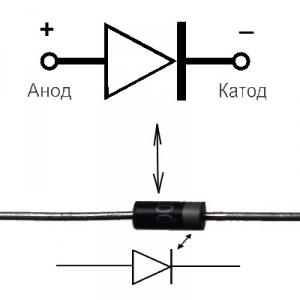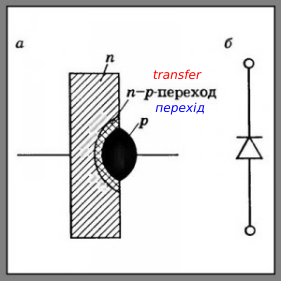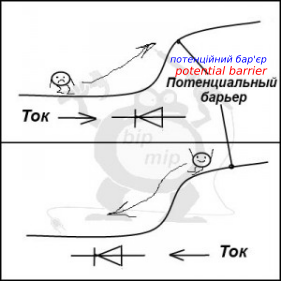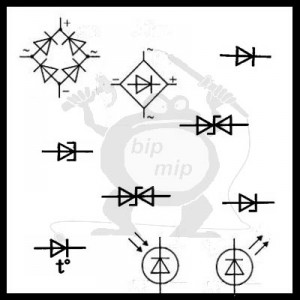To begin mastering semiconductor technology, it is necessary to understand the basic concepts of semiconductor, potential barrier, and p-n junction. In this article, we will discuss some of the intricacies of semiconductor technology using the semiconductor diode as an example.
A semiconductor is:
A semiconductor is a material whose electrical properties can change under the influence of external factors. A semiconductor can either expand the forbidden zone and become a dielectric, or it can narrow the forbidden zone and become a conductor. Such features of semiconductors have found successful application in modern electronics.
A semiconductor diode is:
A semiconductor diode (Figure 1) is a radio electronic component (device) based on one peculiar electrical transition.

A semiconductor diode has only two pins Figure 1 cathode and anode. And the principle of operation of a semiconductor diode is based on the so-called p-n junction Figure 2.

As you can see from Figure 2, a p-n junction is nothing more than a region between two different conductivities (the junction of two semiconductors).
Leaving the laws of physics and a bunch of formulas and proofs unexamined, first of all we should also understand what a potential barrier is, since it is on this phenomenon that the principle of operation of a semiconductor diode and other semiconductor devices and elements is based.
Potential barrier — formed in the p-n junction region, and is the space separating two other regions with different (or the same) potential energies. The potential barrier is at the heart of semiconductor diode operation and basically works like a plumbing valve. A semiconductor diode allows charge carriers to pass through in one direction only Figure 3.

To put it simply, the potential barrier in a semiconductor diode can be represented by a slide. And as can be seen from Figure 3, the electron cannot climb up the slide, but it rolls down from it — that’s how a semiconductor diode works, in general terms, by passing current in one direction only.
The diode designation in the schematic:
The semiconductor diode has its own special designation depending on the type of principle of operation, as well as the operation and electrical features Figure 4.

With an understanding of the principle of operation of a semiconductor diode, you can easily find the type of semiconductor diode you need from the reference book.

